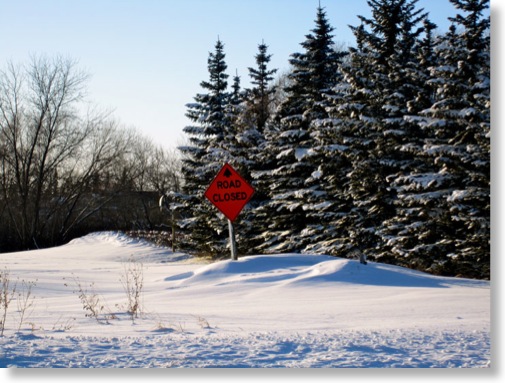
It's not over yet
FTLComm - Tisdale - Saturday, February 19, 2011
Though we associate winter as the season that comes in all of its various flavours in November and departs in this part of Canada in early April. In the 1970s I remember in Weekes, where we had natural ice in the skating rink that we could count on being able to skate by November 9th and there was no point in planning any on ice activities after April 6. Through the years there have been some minor variations but despite what what we have been told about global warming those kind of trends are something that would average out into hours rather than days in the year.
It is amazing that the annual variations though they appear to us from year to be considerable the weather conditions and the potential for variation remains extremely constant from date to date each year. Though the observation reported in Ensign for the day's weather are only one instant in the day it is still interesting to see what it is like from year to year at specific times of the day. Each day Ensign is posted an entry is made and by clicking at the top of the front page on weather you can see the observations going back to 1999.
As each day's period of sunlight increases the day time heating increases and snow is being melted steadily as some is turned to liquid that drops through the snow cover freezing lower and converting the snow crystals into solid ice. Dark areas, gravel or debris on the snow holds more heat and melts more quickly than the highly reflective white snow.
In the first part of the month those temperatures just below the freezing point lull one to think that we are getting into spring but in fact that is fairly common for a warm period like that to occur at that time just as now in the later part of the month it is not uncommon to see these near -30ºC temperatures and wind chills that extend almost to -40ºC.
As we approach the end of February we are in that period of the year when the jet stream, the wind system passing high above us slaps North and South with alarming speed and brings with it the most varied period of weather in the whole year. It is those March and November storms that can bring the year's heaviest snow falls and most violent wind storms. It is really worth taking a look at the data sheet for Nipawin that shows the weather's averages month by month.
In general February is gets the least snow of the winter months at about 15 cm compared with December which is more than double that.
Today I drove around Tisdale and took some winter pictures. It was about -23ºC between 4:00 and 5:00 with a bold clear sky and a very light wind. As you can see from the pictures there is a lot of snow in Tisdale and the field snow cover is substantial.
If you want to know what the provincial government's Watershed Authority thinks about this year's run off you might want to check out their report published on February 1. From it one can reasonable assume that the area from the Yellowhead highway north to us can expect serious run off this spring.